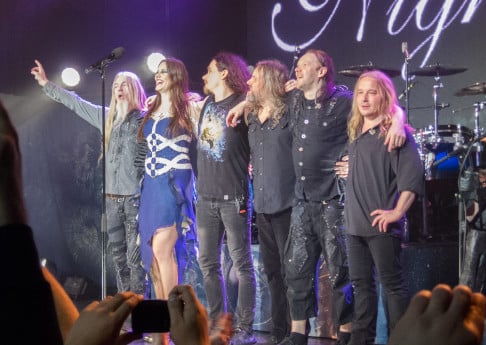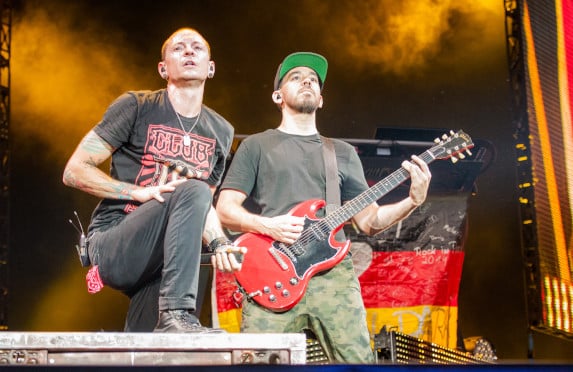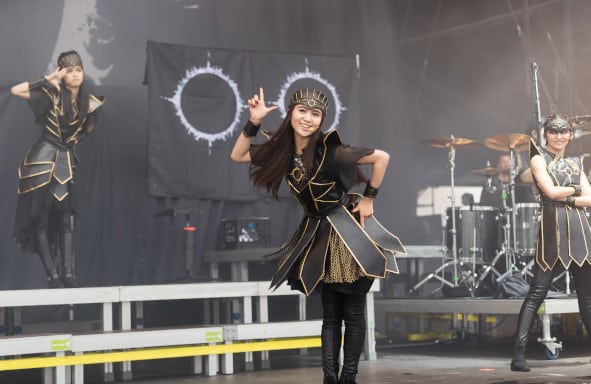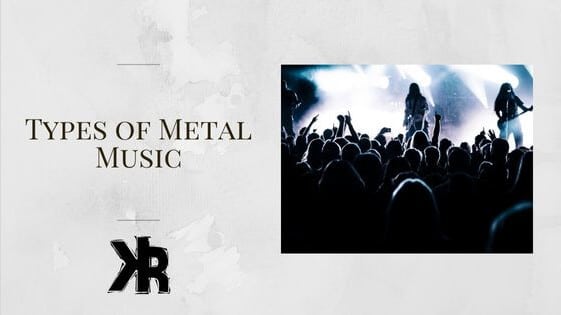Table of Contents
Metal music is a genre that has evolved and diversified over the decades. It encompasses several different subgenres and subcultures. This can really make it difficult for those unfamiliar with the scene to navigate.
Some of the metal subgenres have roots in the traditional sound. For instance, heavy and power metal. They are renowned for their strong vocals and memorable electric guitar riffs.
Other subgenres, like black and death metal, are considered to be more extreme. They stand out for their quick tempos and powerful vocals. But also their often dark and controversial themes.
We’ll look at 20 various metal music types in this Killer Rig article. We will also look at a few of the more recent variations that are becoming popular.
Maybe you’re a metalhead or just curious about the style. At any rate, this article will give you a better understanding of the diversity and evolution of metal music.
25 Types of Metal Music
Here are the types of metal you will find from over the last few decades up until now.
1. Post Metal
Post metal is a genre that incorporates components from various forms of music. This includes post-rock and shoegaze.
It’s highly characterized by its atmospheric soundscapes. Post metal bands frequently use ambiance and texture to craft their sound.
Guitars are run through overdriven amps in order to create an ethereal wall of noise. Bands in this style often experiment with electronics, strings, and even orchestration. All to achieve new sonic textures. It’s a relatively young genre.
But it has quickly become one of the most popular within the metal scene. This is due to its ability to appeal to fans of many different styles. You can find bands like Neurosis, Pelican, and Cult of Luna in this style.
Find the best amp settings for metal here!
2. Heavy Metal
Heavy metal is perhaps the most iconic type of all of them. It typically features distorted guitars, pounding drums, and intense vocals. They are also often arranged into long compositions.
Heavy metal songs are frequently set apart by complex riffs, lyrical themes, and dark imagery.
The vocals are melodic, with a focus on power and energy. The drumming is also very fast-paced, with a lot of emphasis on the double bass pedal. Bands in this genre include some of the most legendary acts in rock history!
This includes Black Sabbath, Motörhead, Anthrax, and Slayer. These bands helped to define the sound and style of heavy metal. Their music continues to be influential to this day.

3. Thrash Metal
Thrash is a subgenre of heavy metal that appeared in the early 1980s. It’s characterized by its fast tempos, aggressive vocals, and socially-charged lyrics. It’s known for its raw energy, powerful electric guitar riffs, and intense drumming.
The origins of thrash can be traced back to bands like Metallica, Slayer, Anthrax, and Megadeth. They are considered the big four bands of metal, but specifically, thrash!
More recent groups have turned up on the scene. This consists of Municipal Waste, Exodus, and Overkill. Thrash continues to have a dedicated following and is still a popular type today.
4. Power Metal
Power metal is a type that surfaced in the 1980s and 1990s. It’s set apart by an emphasis on melody and epic themes. More often utilizing symphonic and operatic elements.
Bands like Helloween and Gamma Ray are considered early pioneers of power metal. They helped to define the characteristics of the style.
It’s known for its strong emphasis on guitar work. This often encompasses fast-paced solos and complex harmonies.
Other well-known bands associated with the category include Blind Guardian, Manowar, and Hammerfall. Power metal remains popular with its sweeping guitar leads, thundering drums, and soaring vocals! It also continues to build a large fan base.
5. Black Metal
Black metal is an extreme form of music that materialized in the early 1980s in Norway. It often features heavily distorted guitars and blast-beat drumming. There are also shrieking vocals and dark atmospheric sections.
Groups associated with the style include Mayhem, Burzum, Gorgoroth, and Darkthrone. Black metal is known for its raw intensity and frequently deals with themes of nihilism, anti-Christianity, and Satanism.
6. Death Metal
Death metal is also very extreme and popped up in the early 1980s. It has aggressive down-tuned guitars, blasting beat drumming, and guttural vocals. Its lyrical themes are usually dark, including death, violence, religion, and politics.
The vocals are also often growling. Notable bands associated with this style consist of Morbid Angel, Cannibal Corpse, and Death.
This type has gone on to create many subgenres such as blackened, technical, and progressive death metal. It’s more of an underground movement these days.
7. Doom Metal
Doom is a style of heavy metal that began in the 1980s. It took form in England and the USA and was influenced by earlier types. Doom is distinguished by slow tempos, heavy riffs, and dark atmospheres.
There is also some influence from blues music with a heavy twist. Its lyrical themes frequently revolve around despair and death. Such as the works of writers like H.P Lovecraft. Notable bands associated with the style include Candlemass and Saint Vitus.
Doom has also originated many varieties. These consists of funeral doom, sludge, and drone metal.
8. Avant-Garde Metal
Avant-garde is also a form of heavy metal. It’s characterized by experimentation, improvisation, and the use of unusual instrumentation. It often combines portions of styles such as jazz, classical, and industrial music.
Notable groups within this type include Mr. Bungle, Monstrosity, and Atheist. Avant-garde has also brought forth many variations. This consists of progressive, post-metal, and Mathcore.
The origins of Avant-garde metal can be traced back to bands like Voivod, Arcturus, and Ulver. They are considered to be the founders of the style. These bands helped to characterize the sound and style of Avant-garde.
9. Folk Metal
Folk metal is known for its use of traditional instruments. This consist of fiddles, accordions, and flutes. As well as its incorporation of traditional folk themes.
It’s a type of heavy metal. But identified by the use of folk instruments and traditional melodies. It frequently combines elements of medieval music, folk, and power metal. Notable bands associated with the genre include Nightwish, Arkona, Eluveitie, and Korpiklaani.
Folk has also spawned many other varieties. Such as Viking, Celtic, and Epic metal. The vocals are typically melodic and powerful. The lyrics often focus on themes of mythology, history, and fantasy.

10. Grindcore
Grindcore is an off shoot of extreme metal, characterized by extremely fast tempos. The heavily distorted electric guitars and growled vocals accentuate this type. It often joins parts of hardcore punk, death metal, and thrash.
The origins of grindcore can be traced back to the early 1980s and with bands like Napalm Death, Repulsion, and Carcass.
Grindcore is also known for its use of samples, spoken word, and other nonmusical elements. This gives it a distinctive and experimental sound. Grindcore has also created many subgenres such as powerviolence, crust punk and grindgaze.
11. Gothic Metal
Gothic metal is identified by its use of dark and romantic lyrics. But also its doom-laden atmosphere. It more often connects elements of gothic rock, classical music, and death metal.
The gothic type is known for its use of clean vocals, which are typically melodic and emotional. Also for its use of piano and keyboard-based melodies.
Well-known bands in the genre consists of Lacuna Coil, Tristania, and Paradise Lost. Gothic has also influenced many varieties such as symphonic, goth n’ roll, and dark folk.
12. Symphonic Metal
In the late 1980s and early 1990s, symphonic metal first appeared. It takes advantage of a symphonic component. Including the use of violins, cellos, and other classical instruments. This is what makes it distinct.
As well as its incorporation of operatic and choral vocals. Symphonic music is renowned for fusing the violence and strength of heavy metal! But with the grandeur, melody, and harmony of classical music.
Bands connected to the genre include Nightwish, Epica, and Xandria. It has also spawned many subgenres such as melodic black, gothic rock, and doom metal.
13. Nu-metal
Nu-metal is a form of alternative which combines components from rap. It’s almost a fusion of alternative rock with heavy metal. It’s set apart by its normally aggressive sound. This consist of distorted down-tuned 7-string guitars and hip-hop beats.
Bands that are considered the forefathers include Korn, Limp Bizkit, and Linkin Park. Nu-metal has also spawned many other versions, such as nu-metalcore and rap rock.
It’s also known for its use of rap-style vocals. They are often delivered in a shouted or spoken manner. Plus its heavy use of electronic features such as samples and programming.
The lyrics often focus on themes of alienation, frustration, and rebellion. The use of metaphors and symbolism is also quite common.

14. Rap Metal
Rap metal is also a spin-off of alternative and is somewhat similar to Nu-metal. All with its own twist, of course. It fuses heavy metal with rap and hip-hop influences.
Hip-hop beats, distorted down-tuned guitars, and an aggressive sound are the main features. This is the best way to define it.
Bands like Rage Against the Machine, Limp Bizkit, and Run-DMC are well-known examples. It has encouraged a number of variations, including nu-metalcore and rap rock.
15. Groove Metal
Groove metal is a form that combines traditional and thrash with funk and blues. It’s generally characterized by its intense riffs, down-tuned guitars, and chugging rhythms.
It’s known for its use of elements from funk and hip-hop. This includes syncopated rhythms and guitar riffs. Which gives the genre a groovy sound.
The vocals are low-pitched and harshly growled. The lyrics focus on themes of inner turmoil, social issues, and personal struggles.
Bands associated with the genre are Pantera, Machine Head, and Lamb of God. This groove type has also spawned many subgenres such as groovecore, death-n-roll, and rap metal.
16. Industrial Metal
The industrial style is a form of alternative metal. This fuses elements from industrial music and heavy metal. It’s recognized by its aggressive sound, heavily distorted riffs, samples, and synths. You will also find electronic beats and features of experimental music.
The origins of industrial can be traced back to bands like Throbbing Gristle, Einstürzende Neubauten, and Ministry.
It has had a significant impact on the development of other types. Such as nu-metal and alternative metal. Some more well-known bands in this style are Nine Inch Nails and Fear Factory.
17. Sludge Metal
Sludge is an offshoot of alternative metal. Created by joining elements from doom and hardcore punk. Typically, sludge metal features slow tempos, thick riffs, and heavy distortion.
The down-tuned guitars and their use of feedback and other noises create a thick, murky sound.
The lyrics frequently focus on themes of despair, loss, and personal struggles. You will find bands like The Obsessed, Acid Bath, and Buzzoven within this genre. Additionally, it has spawned variations like sludgacore and post-metal.
18. Stoner Metal
Stoner metal stands out among other heavy varieties. This is done by its signature sludgy riffs, psychedelic-tinged sounds, and groove-based rhythms. Heavy distortion and mid-tempo drumbeats are also common features of this genre.
As well as additional elements from synths and sampled soundscapes. The vocals are typically low-pitched and melodic. With lyrics that focus on themes of introspection and nature.
Bands like Kyuss, Fu Manchu, Sleep, and Monster Magnet have all helped to shape the stoner metal soundscape. It shares close ties with genres like doom metal and desert rock.
19. Kawaii Metal
This genre emerged in Japan in the early 2010s. It’s fronted by bands like Babymetal, Ladybaby, and Doll$Boxx. Also known as Cute Metal, this is a sub-genre that combines heavy, aggressive parts with the cuteness of J-Pop. The vibrant sound is both energetic and infectious.
Merging shrill guitars with booming drums, catchy melodies, and elements of cute culture. Kawaii metal creates an unforgettable sonic experience that appeals to fans across different types.
It’s not just about the music, it’s also about the performance and visual aspects. These bands often include pieces of Japanese pop culture. Such as anime and cosplay, into their live shows.

20. Christian Metal
This is a genre of music that combines the message of Christianity with heavy metal. Sometimes also known as white metal. This blend can be heard in bands such as Stryper, Whitecross, Tourniquet, and Wolves at the Gate.
Each one brings their own blend of lyrics and sounds to create powerful anthems.
Christian Metal is not just about the music, it’s also about the message. These bands frequently use Bible verses, Christian theology, and personal testimonies into their lyrics. Providing a deeper level of meaning and inspiration for fans.
At its core, Christian metal seeks to inspire faith in Jesus Christ and remind believers to stay strong amidst adversity. For fans of heavy music looking for messages of hope, this Christian style is a powerful choice.
21. Pirate Metal
Arrrr, ye be lookin’ fer some Pirate Metal, eh? Well, ye’ve come to the right place, me hearties! Pirate Metal is a sub-genre. It combines the heavy, aggressive elements with the swashbuckling and adventurous spirit of pirates.
This style emerged in the late 1990s and is fronted by bands like Alestorm, Swashbuckle, and Running Wild.
Combining traditional pirate instrumentation with heavy metal beats and epic choruses! This subgenre is sure to bring out the scallywag in all of us! Check out Alestorm, Swashbuckle, and Devil’s Blood Money to experience some of the best pirate metal around today.
22. Medieval Metal
If the call of a knight’s lance and the sound of clanging swords beckons to you, then medieval metal is surely your calling. This genre takes listeners back in time to a place of kings and castles, even heroes and villains!
Where battles were fought with honor and duty was held above all else. The stage performances are often high-energy! With the band members dressed in medieval attire and acting out medieval-themed scenarios.
Listen to bands like Grave Digger, Falkenbach, Thyrfing, and Turisas to experience some of the best of this age-old sound.
23. NWOBHM
The New Wave of British Heavy Metal, or NWOBHM for short. It was a groundbreaking genre of music that emerged in the late 1970s to early 1980s.
This movement was branded by its heavy guitar riffs and thundering drums. With bands such as Iron Maiden, Judas Priest, and Motörhead among its standard-bearers.
The NWOBHM had a powerful influence on the heavy metal types that would follow. Eventually forming the foundation for later groups such as Metallica and Megadeth. Lars Ulrich was influenced to start a band at a Diamond Head performance.
To this day, NWOBHM remains an iconic sound in rock ‘n roll history.
24. Djent
Djent is a subgenre of metal that has its roots in the 1990s prog-rock and math-rock scenes. Set apart by tight, intricate grooves and heavy guitar riffs, djent has become an increasingly popular sound over the last decade.
Bands such as Meshuggah, Periphery, and Animals as Leaders have pushed the boundaries of this style and brought it closer to the mainstream.
It’s highly characterized by its use of complex, polyrhythmic guitar riffs and precise playing. If you’re looking for something different, look no further than djent!
25. Progressive Metal
Progressive metal is a style that emerged in the late 1980s. This style of metal is known for its complex and often progressive song structures. Normally combining components of classical and jazz music with traditional heavy metal.
Bands such as Dream Theater, Opeth, and Gojira have been at the forefront of this type. All while newer artists like Cynic and Periphery are further expanding its boundaries. Guitars dominate the soundscape and are often drop-tuned.
It’s more frequently preferred with this style in order to create darker, denser tones. If you’re looking for something heavy yet intricate, then you will be treated well in the arms of progressive metal!
Where Did Metal Come From?
Early metal music emerged in England and the United States during the late 1960s and early 1970s. It was a direct response to the psychedelic and progressive rock of the time. It introduced harsher vocals and heavier guitar riffs. They were far more aggressive than their predecessors.
This period gave birth to classic sounds like heavy, thrash, speed, and doom metal. It cannot be overlooked as it has its own sound. Perhaps it wasn’t as aggressive as the metal we play today, but it had its own edge.
Some of the most influential bands in the early days of heavy metal include Judas Priest, Iron Maiden, and Deep Purple.
Conclusion
Metal music is an incredibly diverse genre, with many different varieties that all have their own sound and feel. No matter what type you prefer, there is something for everyone.
Whether it’s thrash, doom, black, or post-metal, each style has something to offer fans of heavy music. There are no wrong answers when it comes to appreciating metal! So find the subgenre that speaks to you and enjoy!

